
萬(wàn)物歸宗 立方體裝置01.jpg

矩陣縱橫設(shè)計(jì):安慶富春東方銷售中心

洪德成作品:益田·影人四季花園E戶型樣板房

徐國(guó)峰:泛海國(guó)際 Art-Deco風(fēng)格,華美主張
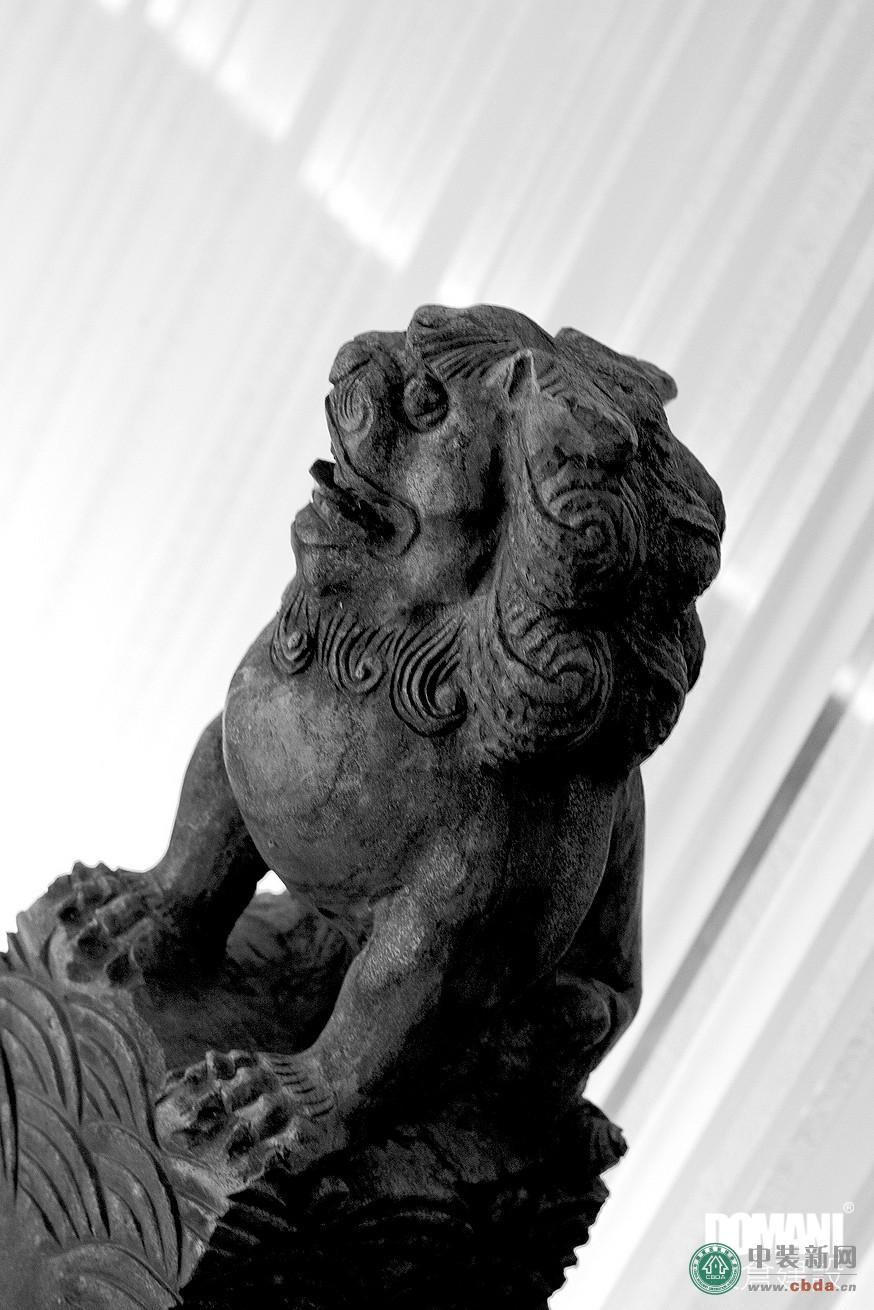
東倉(cāng)建設(shè)張星:香港COCO辦公室
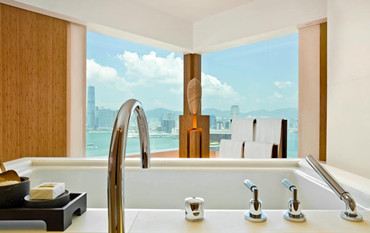
傅厚民:香港奕居精品酒店設(shè)計(jì)

梁志天:北京富力灣湖心島別墅項(xiàng)目A2戶型
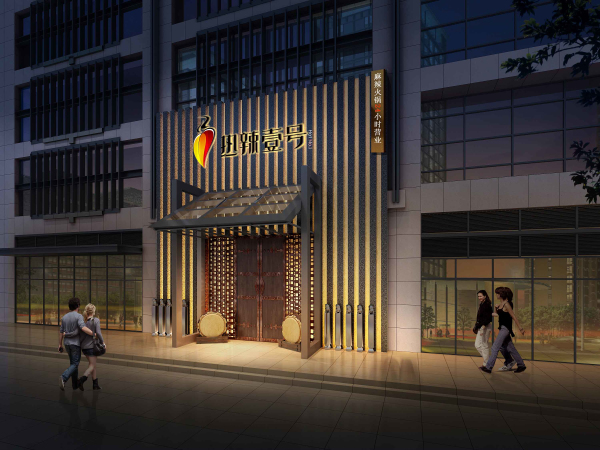
李冰冰、黃曉明、任泉合營(yíng)火鍋店熱辣一號(hào)設(shè)計(jì)方案

倪衛(wèi)鋒作品:伊休高級(jí)實(shí)木定制案例

Work8眾創(chuàng)空間——最具顛覆性的辦公空間設(shè)計(jì)
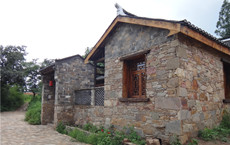
孫君:廣水市桃源村鄉(xiāng)村景觀改造 古村落浴火重生




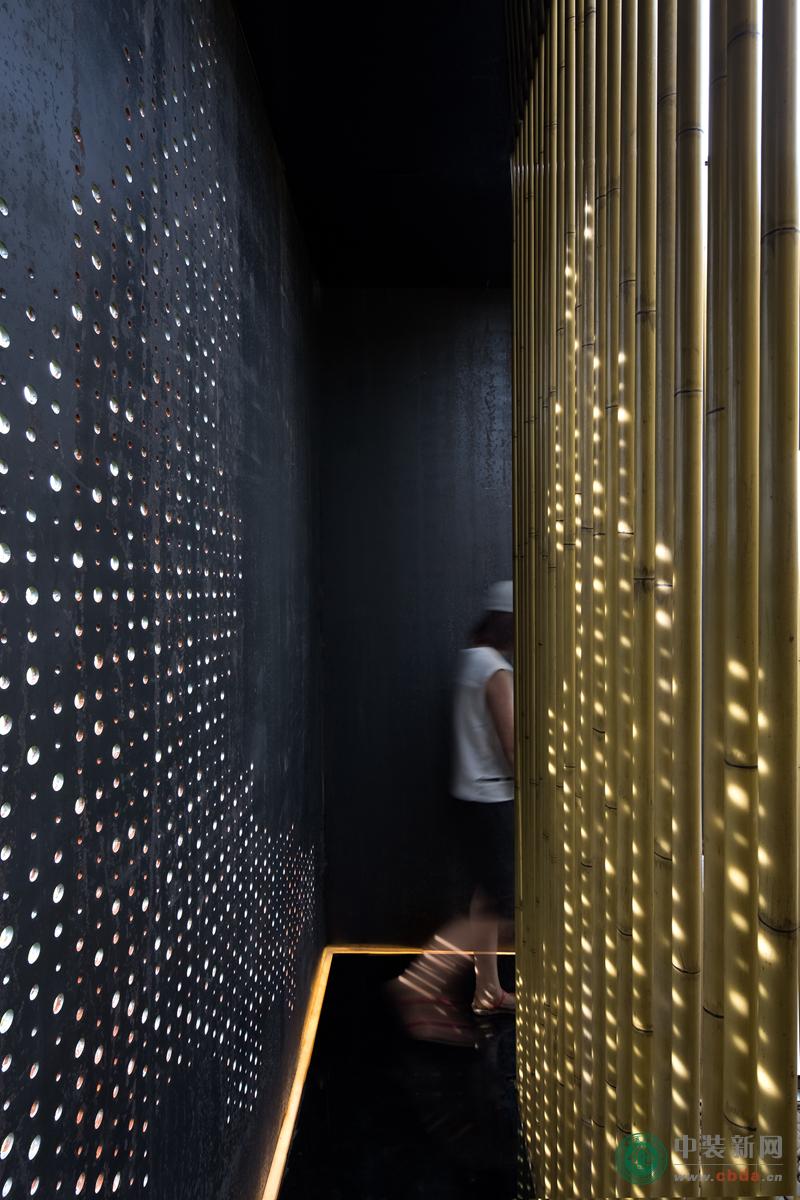
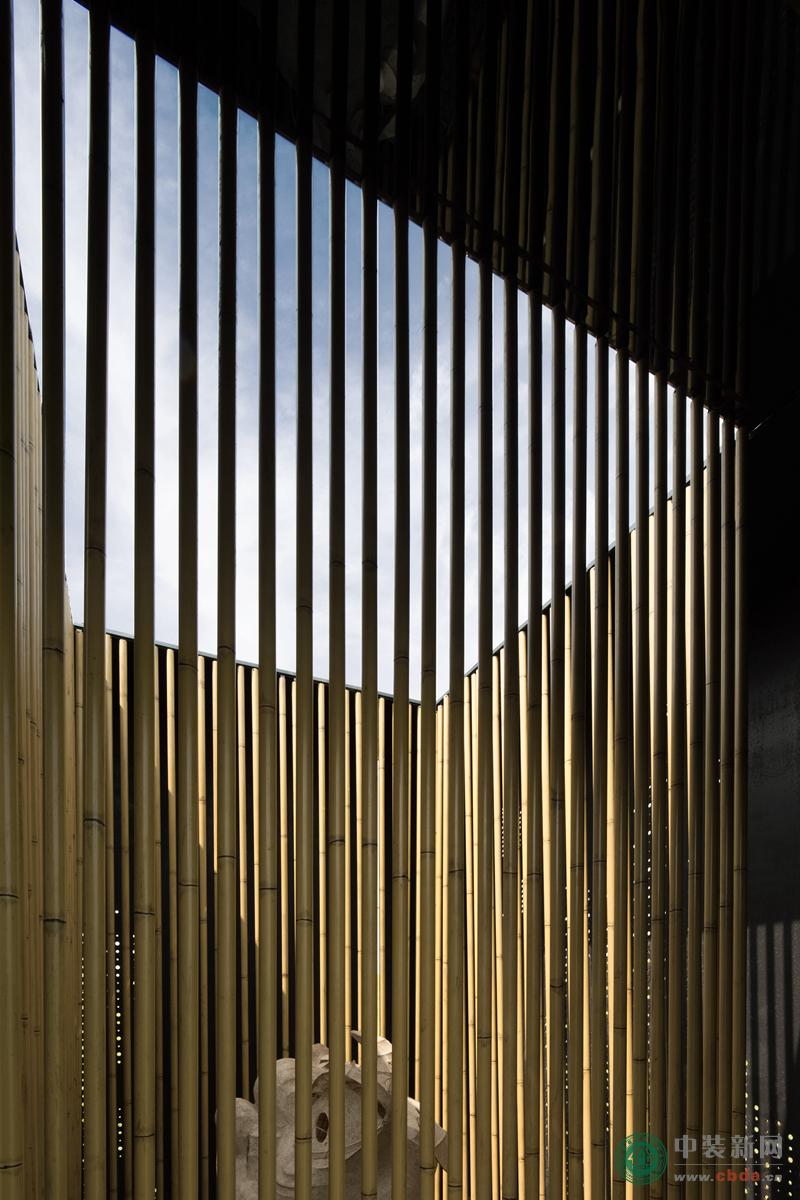



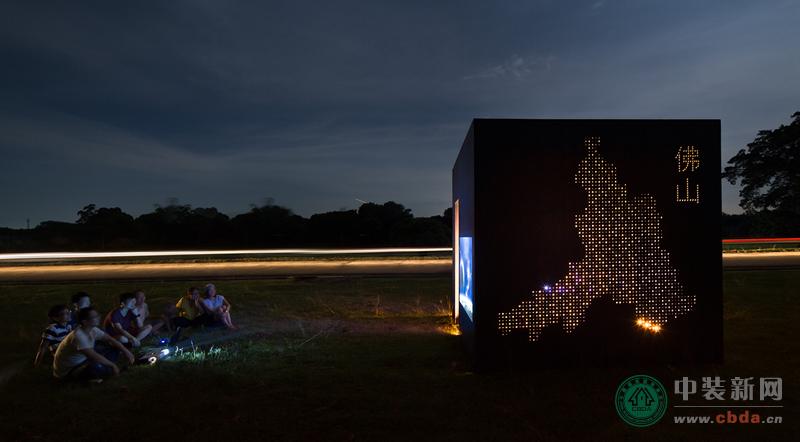
回 | 萬(wàn)物歸宗
設(shè)計(jì)機(jī)構(gòu):C.DD | 尺道設(shè)計(jì)事務(wù)所(www.cddesign.cn)
總設(shè)計(jì)師:何曉平、李星霖
項(xiàng)目團(tuán)隊(duì):余國(guó)能、梁一輝、呂灼明、蔡鐵磊
攝 影:歐陽(yáng)云
項(xiàng)目地點(diǎn):廣東佛山
裝置面積:9㎡
主要材料:沖孔鋼板、鍍膜鋼化玻璃、竹子
展示時(shí)間:2015年 – 2016年
這是個(gè)3米×3米×3米的立方體裝置。空間不大,但承載了設(shè)計(jì)師對(duì)于自己家鄉(xiāng)廣東佛山的感情和思考。設(shè)計(jì)的核心理念可以用四個(gè)字概括——“萬(wàn)物歸宗”。
實(shí)際上,這個(gè)裝置是設(shè)計(jì)師在廣州設(shè)計(jì)周-城市表情板塊的邀請(qǐng)下,完成的一件代表佛山的展品。由于展方有空間限制要求,設(shè)計(jì)師選擇了可以擁有最大容積的立方體作為裝置的載體,以呈現(xiàn)“城市”這個(gè)廣大的主題。而立方體的運(yùn)用,也讓設(shè)計(jì)師得以圍繞“萬(wàn)物歸宗”這一核心理念,構(gòu)筑一趟去往“佛山”也回歸本心的旅程。
從結(jié)構(gòu)上看,設(shè)計(jì)師用竹子繞著立方體的幾何中心圍出了一個(gè)更小的長(zhǎng)方體空間。由此,沿著立方體的四個(gè)側(cè)立面,一條能容納一人通行的單向走道就被辟出。這是旅行的路。但如果自上而下俯看整個(gè)空間的橫截面就會(huì)看見,竹子墻和外立面墻的兩個(gè)方形實(shí)際上拼出了一個(gè)象征“歸宗”的“回”字。
“回”的過程從在進(jìn)入裝置之前已經(jīng)展開。觀眾從外面的世界由狹小的入口獨(dú)身進(jìn)入裝置,和著帶有儀式感的背景音樂緩步繞行裝置一周,透過根根竹子間的縫隙,看到擺在空間正中央的南獅和牛皮鼓,就是經(jīng)歷了一次環(huán)境和內(nèi)心都由外到內(nèi)的旅行。而這樣的旅程如果從空間層次上看,從外界環(huán)境,到外立面的鋼板材料,到內(nèi)墻使用的竹子,再到被竹子圍起的南獅、牛皮鼓,還經(jīng)歷了由現(xiàn)代到古老,由新到舊的過程,會(huì)給觀眾以另一個(gè)維度的啟迪。
對(duì)于設(shè)計(jì)師而言,所謂“宗”是佛山,也是懷著初心的本我。擺在空間正中央的南獅正是發(fā)源于佛山市南海縣西樵地區(qū),因此能代表佛山一部分重要的傳統(tǒng)文化,也能象征設(shè)計(jì)師的根。而舞獅就需要擊鼓,因此一張未經(jīng)裝飾的牛皮鼓原型被置于南獅白胚之下,二者成套出現(xiàn)。值得一提的是,選用南獅白胚而非已點(diǎn)睛裝飾的南獅是因?yàn)椋O(shè)計(jì)師可以利用白胚的透光性,通過在胚內(nèi)放置閃爍的彩燈,來豐富南獅的意象。正如鼓聲引導(dǎo)舞獅的情緒和動(dòng)作,空間內(nèi)的背景音樂可以和彩燈的閃爍形成配合。那么在觀眾看來,南獅時(shí)而紅、時(shí)而綠,表現(xiàn)出的也是不同的感情。
代表佛山的意象還出現(xiàn)在了外立面上——設(shè)計(jì)師用小孔在鋼板墻面上拼出了佛山市和南海縣的地圖以及“佛山”兩個(gè)字。從功能性上說,這一方面能加強(qiáng)空間的透氣性,使得參觀者能有更好的感受。另一面,這些小洞也為空間透了光——除此之外,整個(gè)空間只有竹子隔出的長(zhǎng)方體頂面有塊玻璃為空間提供了自然照明。從意境上說,考慮到過道的天花板和地板都使用了鏡子,當(dāng)小孔中透入陽(yáng)光,在鏡子的折射下,整個(gè)空間會(huì)變得更加神秘、虛幻、多變。這正是心靈之旅所需要營(yíng)造的意境。而這樣的意境還會(huì)隨裝置本身擺放位置不一樣而變化——陽(yáng)光照射角度的變化,使得小孔透光造成的光影圖畫又會(huì)是另一番模樣
設(shè)計(jì)師坦言,整個(gè)設(shè)計(jì)過程更像是一次重新學(xué)習(xí)和領(lǐng)悟家鄉(xiāng)傳統(tǒng)文化的過程。不過由于空間有限,能表述的也有限。她只希望通過這樣精選式的設(shè)計(jì)表達(dá),能讓更多人關(guān)注佛山,感悟佛山。而在更大的層面說,她希望每個(gè)觀眾都能受到裝置的啟發(fā),重視家鄉(xiāng)傳統(tǒng)文化的傳承,關(guān)注自己的內(nèi)心根源,不管他們來自哪里,身處何方。
Hui | Origin of Everything
Design Company: C.DD (www.cddesign.cn)
Chief Designer: HE Xiao-Ping, LI Xing-Lin
Project Team: YU Guo-Neng, LIANG Yi-Hui, LV Zhuo-Ming, CAI Tie-Lei
Location: Foshan, Guangdong, China
Area: 9㎡
Main Materials: perforated steel plate, LOW-E, bamboo
Photographer: OUYANG Yun
Display Time: 2015 - 2016
It is a cubic architectural installation of 3m*3m*3m. This is not a large space; however, it carries the designers’ great affection and thinking for their hometown Foshan. The core concept of the design could be summed up in one phrase” Origin of everything”.
Actually, this architectural installation is an exhibit represents Foshan designed by the designers when invited by Expressions of The City during Guangzhou Design Week. Because the organizer sets limitations to the size of exhibition work, so the designers choose a cube which has the largest volume as the carrier of the architectural installation to express the vast theme “city”. The use of the cube allows the designers to present a journey back to “Foshan” and their original minds around the core concept of “Origin of everything”.
For the structure, the designers use bamboos to form a smaller rectangular space around the geometric center of the cube. A one-way path which allows passage of only one person is thus built along the four lateral facades of the cube. This is the road for the journey. However, when look at the cross section of the whole space from above, the two squares created by the bamboo wall and exterior wall together form the Chinese character “Hui”, which symbolizes “return to the origin”
The process of “Hui”has begun before visitors enter into the architectural installation. Visitors could come into this space alone through a narrow entrance, walk slowly and circle the space with the playing of background music which has a sense of ritual. While looking through the gaps between the bamboos, semi-finished Chinese Southern lion and Chinese leather drum placed in the centre could be seen; it is like a journey from outside to inside of both your inner self and the environment. In respect of spatial level , this journey , from external environment, the steel plate material of the fa?ade, to the bamboo of the inner wall, and then to the traditional prototypes which enclosed by bamboo, allows visitors to experience the process from modern to ancient and from new to old, and offers visitors enlightenment from a different angle.
For the designers, “Origin” means Foshan and the original selves. The Chinese Southern lion placed at the right centre of the space is originated from Xiqiao district, Nanhai county, Foshan. Thus it represents part of Foshan’s important traditional culture and it represents the root of the designers as well. Beatings of drum is necessary when performing a lion dance, so a primitive leather drum prototype is placed under the white body of the Chinese Southern lion, they appear as one set. What is worth mentioning is that, the designers choose semi-finished Chinese Southern lion instead of a completed Chinese Southern lion with eyes is because that they could take use of the light permeability of the white body; they could make the image of the Chinese Southern lion more rich through placing flashing lights inside the white body. As the beatings of the drum leads the emotions and actions of the lion dance, the background music in this space matches with the flashing colorful lights. So visitors would see the lion in red or in green from time to time, and the colors express different emotions.
The imagery which represents Foshan also appeared on the fa?ade – the designers piece together the maps of Foshan city and Nanhai county and the words “Foshan”on the steel plate wall with small holes. Functionally, it strengthens the ventilation of the space and gives visitors a better feeling on the one hand; on the other hand, these small holes bring light to the space – apart from that, only the rectangular roof which is partitioned off by bamboos that could provide natural light for the space. From the aspect of artistic conception, considering that mirrors are used in both the ceiling and floor of the corridor, when sunlight enters into the space through the holes, under the reflection of the mirror, the whole space will become more mysterious, fantasy and changeable. This is the artistic conception needed to be created for the journey of our mind. And such artistic conception will change according to the position that the installation is placed— when the angle of the sunshine changed, the picture create by light through the holes will change accordingly.
The whole design process is more like a process of re-learning and understanding of the traditional culture of their hometown, said the designers. But due to the limit of space, so what could be expressed is limited as well. What they hope is that through this well-chosen design expression, more and more people could pay attention to Foshan and try to understand Foshan. From higher level, the designers hope every visitor could be inspired by the architectural installation so as to pay more attention to their hometown’s traditional culture and the original self, no matter where they come from and where they are.
LINKS